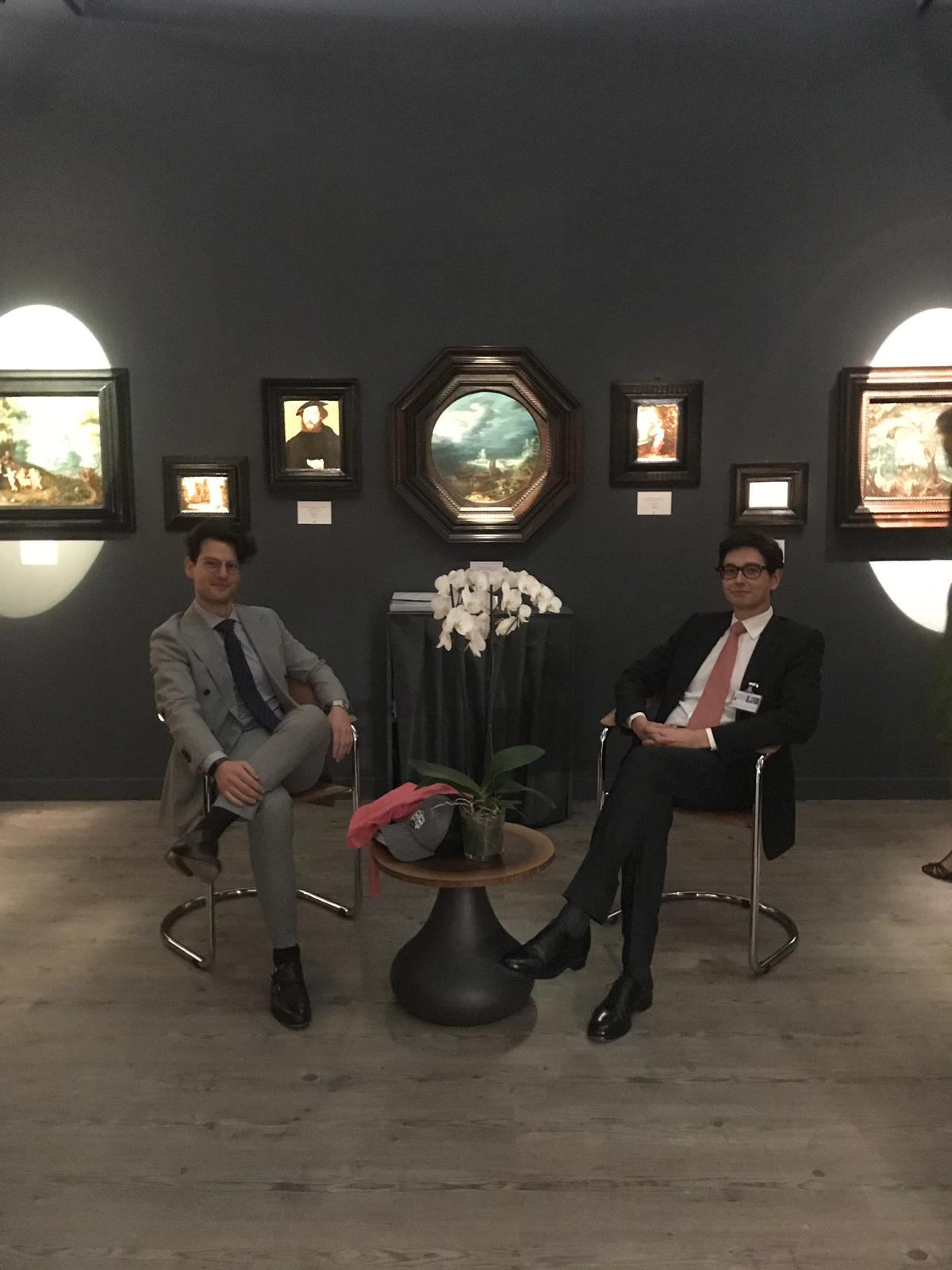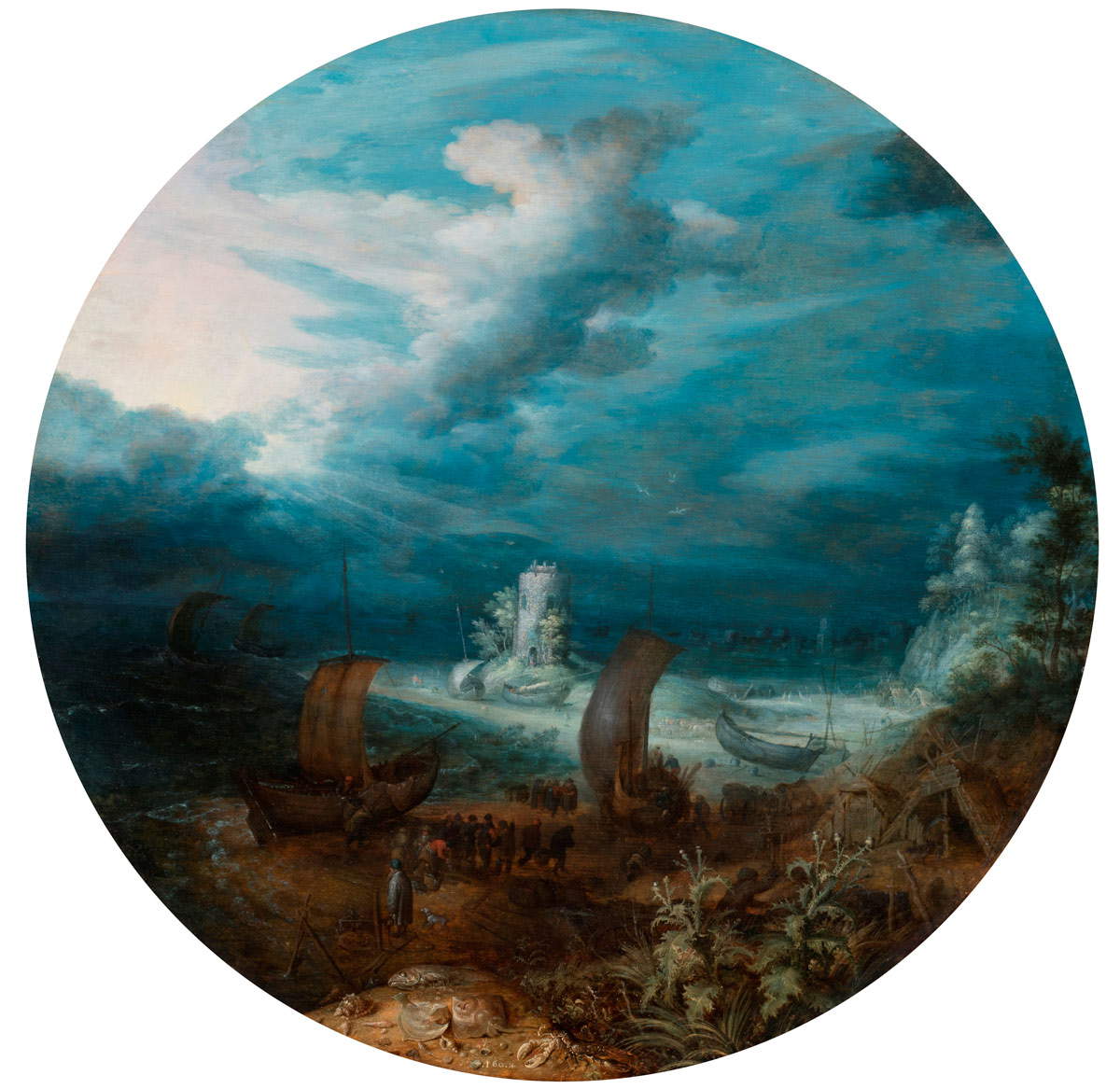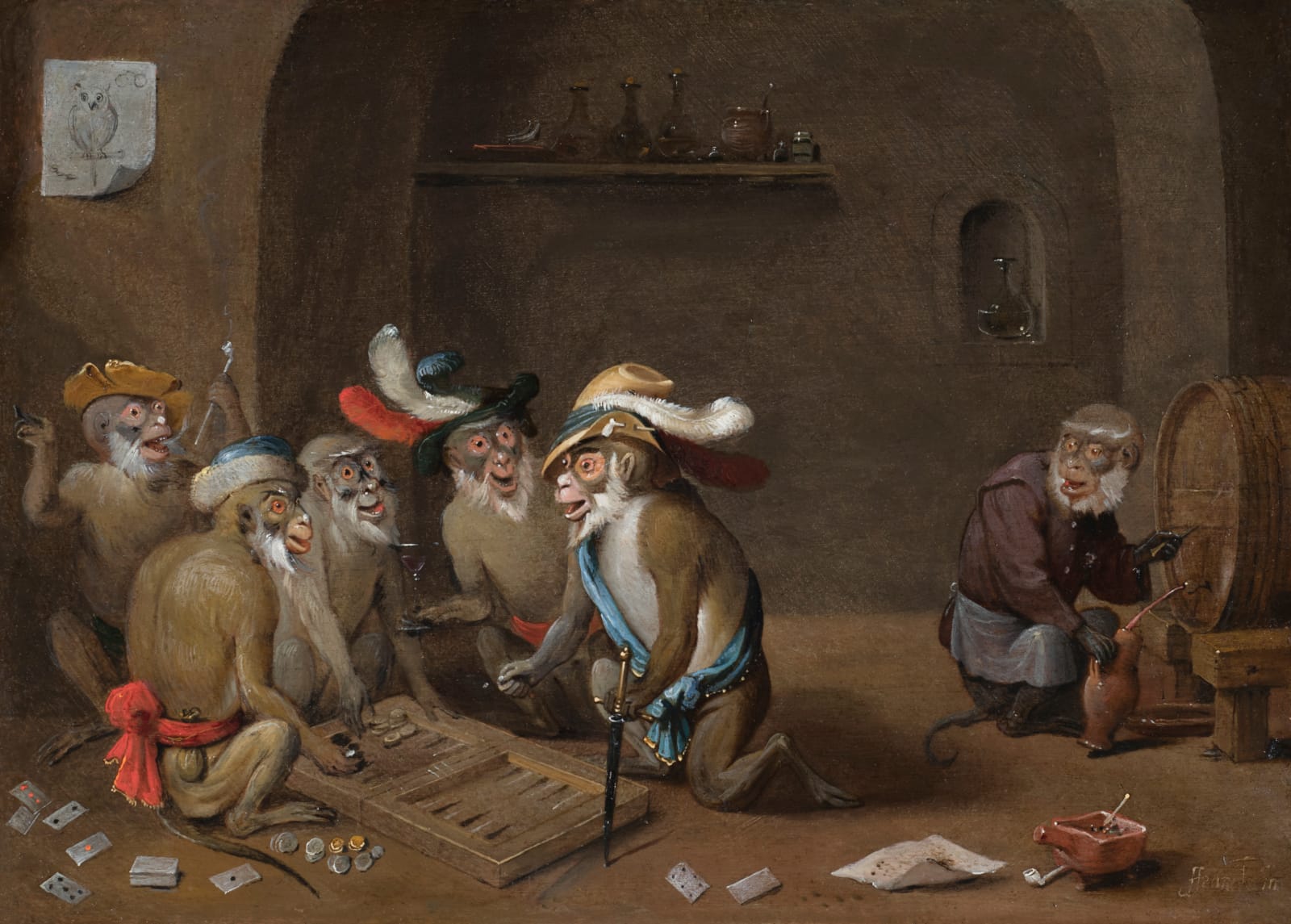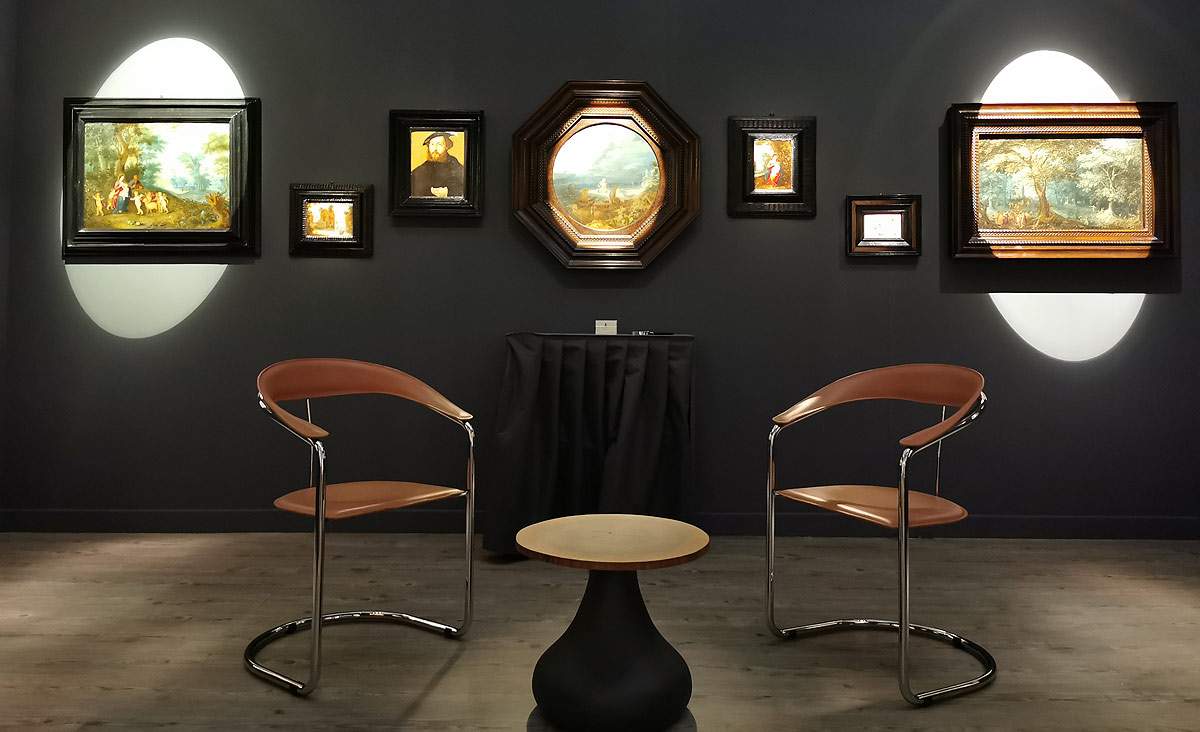The second of Finestre sull’Arte ’s three in-depth features devoted to gallery owners exhibiting at the Florence International Antiques Biennale is dedicated to Massimiliano Caretto and Francesco Occhinegro: they are the two very young owners of the Caretto & Occhinegro Gallery(www.carettoeocchinegro.com), which has now become a leading name forFlemish art and an important reference for all collectors of the works that were once produced in Flanders. From Turin, despite their young age (they are both in their early thirties) they already have a lot of experience, and are at their first participation in the Florence Biennale Internazionale dell’Antiquariato. And the balance is positive.
“The Biennale,” says Francesco Occhinegro, “is the most beautiful fair in the world, both in terms of the atmosphere and the public and clientele, which have now become ... international.” And those who crowd the halls of Palazzo Corsini, as is well known, come from every corner of the globe. “In the first two days,” Occhinegro tells us, “we spoke practically only in English, conducted negotiations almost exclusively with foreigners, and completed two important sales: one to an American client and one to a Belgian client. Then, little by little, the Italian clientele arrived as well, and the Biennale is attended by the most important Italian collectors.” So a super-positive balance sheet, despite the fact that Caretto & Occhinegro figures among the rookie galleries. “Besides,” adds Massimiliano Caretto, “if we exclude TEFAF in Maastricht, this is the most beautiful and important ancient art fair in the world. We really feel like we agree with what everyone has said”: this year’s BIAF has indeed received unanimous plaudits from the public and critics.
We take a tour of their booth and they show us the best pieces, starting with one of the stars of this BIAF (so much so that we also included it among the ten most interesting works of edition number 31), namely Coastal Landscape with Fishermen in Front of a Saracen Tower, a circular panel painting by Roelant Savery (Kortrijk, 1576 - 1639) and Hans Savery II (Haarlem, 1589 - Utrecht, 1654), uncle and nephew respectively: two Dutch artists active in the early 17th century, who were also in Italy for some time. The work is important not only because of its quality, but also because it is an important testimony to the passage of the two artists in our country.
“We wanted to bring it,” Caretto explains, "because it is evidence of the authors’ trip to Italy. The landscape depicted has been identified as an area between Istria and Dalmatia, and it was probably reported by the Saverys in a sketchbook. Keep in mind that the other variant of this painting is in the Uffizi: you can see there the same Saracen tower that appears in the painting we exhibited in the Biennale. And it is for this reason that we wanted to bring it as a trait d’union between the Flemish art that we treat and the Italian territory."
Francesco Occhinegro, on the other hand, captures our attention on a painting of a completely different tenor, in a sense completely opposite to the landscape we have just seen: it is a work by the Flemish Frans Francken III (Antwerp, 1607 - 1667), an oil on copper entitled Monkey Games (allegory of the human condition). Occhinegro illustrates it for us, “we like it because it is a painting that, unlike the Savery landscape, has nothing to do with Italy: it is a fully Flemish work.” And the subject is particularly sought after by collectors, he explains: "it is a so-called singerie, that is, a monkey scene: a subject that is highly prized by Flemish art collectors. Moreover, this one by Frans Francken III is one of the very few monkey scenes to be signed."
Monkeys were often featured in paintings made in 17th-century Flanders: “in Flemish art,” Occhinegro continues, "depictions like these were always allegorical representations of human society. In this case we have, we have high monkeys discussing playing backgammon, smoking and tasting wine, we have the servant monkey looking at them with admiration and a willingness to participate, but above them, in the sheet hanging on the wall, we see an owl who knows everything, and who sees them for nothing other than what they are ... and that is monkeys. A compendium of everything that was the society of that time, and a compendium of what is Flemish art of the time. Something totally antithetical to a landscape that has a strong connection to Italy."
Caretto and Occhinegro’s age allows us to get into the topic of the relationship between collecting and young people: and indeed, of their peers among the Biennale stands it is not as if we see that many. When we ask them what it is like to be so young in an environment that is sparsely populated by those under 45, they reply that “we often hear about a lack of collecting on the part of young people. Actually, it is a lack of communication from the generations before us. Young collectors are there, they are very different from their predecessors, they are much more informed, they know about auctions, they know about valuations, and you probably need to talk to them from the same position.”
In short: the young people may not be very many, but they are there, and they are extremely passionate. “We are more optimistic than other colleagues who have a lot of experience but perhaps have experienced a different world,” the two partners emphasize. “It doesn’t make sense to be pessimistic: it makes sense, instead, to get into a new perspective, to become familiar with the new dynamics of the market (for example, we find that, usually, the collectors who get informed are really very informed, especially young people). And so you play at a level of seriousness that has to be total in every respect.”
We ask the two antiquarians, finally, if they would like to make a suggestion to 30-year-olds like them who want to start an antique art collection. “You have to see what you like,” Caretto advises, “and based on what you feel, within your possibilities, bùtat on what strikes you. You should not be frightened: those who are frightened cannot do what is an act of self-love, which is to buy art.” Occhinegro echoes him, "one must overcome the fear of the first moment. It is definitely necessary to get informed, but this is not a problem for the new generation of collectors, because they already do it. One must then trust those one has chosen to trust. And embark on a path of collecting growth. It’s normal that in young people the ability to spend is not what you will have later: so it’s important to grow together, so you need to start with something you like, which may not be the most important piece in the booth, and grow as you go along, in an atmosphere of mutual help."
In the following photos: Francesco Occhinegro and Massimiliano Caretto, the works, the booth.
 |
| Francesco Occhinegro (left) and Massimiliano Caretto (right) |
 |
| Roelant Savery and Hans Savery II, Coastal Landscape with Fishermen in Front of a Saracen Tower (1613-1614; oil on circular panel, diameter 49.5 cm) |
 |
| Frans Francken III, Monkey Games (allegory of the human condition) (ca. 1660; oil on copper, 22.5 x 31.5 cm) |
 |
| BIAF focus 2/3. Caretto and Occhinegro: "Young people who want to collect ancient art? They should not be scared off!" |
Warning: the translation into English of the original Italian article was created using automatic tools. We undertake to review all articles, but we do not guarantee the total absence of inaccuracies in the translation due to the program. You can find the original by clicking on the ITA button. If you find any mistake,please contact us.